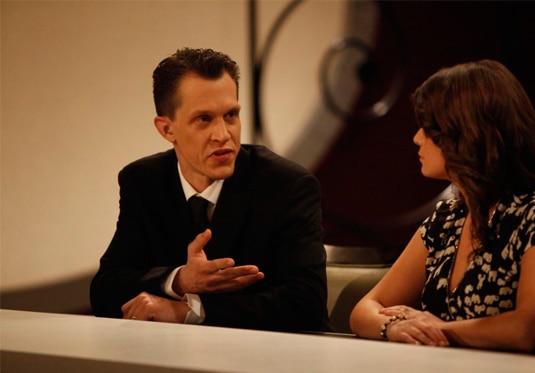Dippin' Dots!
Eli Kirshtein explains how the park treats are made.

Michael Laiskonis is a pastry demigod, and being the Executive Pastry Chef at Eric Ripert’s Le Bernardin in New York he has a tremendous forum to show it. He is all-encompassing in both technical and creative senses with an incredible intuition for restraint while still being very ambitious. Starting his pastry career in his home state of Michigan, he originally studied visual arts at Wayne State University. He eventually became the Pastry Chef at the acclaimed Tribute in Farmington Hills prior to a move to New York and to Le Bernardin. His accolades are numerous and include, but are not limited to, The James Beard Award for Outstanding Pastry Chef, as well as Pastry Chef of the Year from Bon Appetit. He has also been praised for his contributions in culinary education doing continuous lectures and classes to up and coming culinary students and professionals, as well as writing educational and insightful articles for Food & Wine magazine. His pastries are well-respected for their refinement and accuracy while maintaining highly approachable flavors and keeping a very modern edge. And with all that going for him, he’s a really nice guy to boot. He is a fantastic judge for the chefs to have critique their food.
For the last couple seasons of all of Top Chef, liquid nitrogen has been making appearance. It is nitrogen that has been made into a liquified state by a process known as fractional distillation. By a method of compression it slowly chills and becomes a liquid state. Zygmunt Wróblewski and Karol Olszewski first achieved it on earth on April 15th, 1883 at the Jagiellonian University. It is -210º C (-346º F) and boils at -196º C (-321º F) and evaporates out to nitrogen gas. By having a liquid at such a low temperature it allows chefs to freeze things at a much more rapid pace than usual, as well as freezing things that a traditional freezer cannot, like hard liquor. The most common usage in the everyday food that you might have seen is in the sporting arena favorite Dippin’ Dots. They are made when ice cream base is dripped into a bath of liquid nitrogen where it freezes into pearl shapes before it has a chance to hit the bottom of the container. The chefs have been using it over the past few seasons to freeze ice cream and sorbet very quickly as well as for a few more specific techniques like the pearls.Let's talk about chocolate tempering. Some people can, have, and will write a dissertation on the subject but I will try to put it into a simple context. The reasons for tempering are very important. First of all, it prevents the chocolate from melting at too low of a temperature -- think melting in your hand, not in your mouth. Second is to give a beautiful sheen and smoothness. It is also essential for the chocolate to set up and harden in any kind of reasonable period of time. With out going through this process your chocolate will look pale and chalky and will break apart in a very crumbly manor. When you melt, and then chill chocolate you are basically forming tiny crystals that bind together to form the solid mass of chocolate, envision melted butter re-solidifying. By melting the chocolate fully to liquid around 45º C (113º F), then chilling it down to about 27º C (80.6º F), it will begin to form small crystals. It is then agitated to help “seed” those crystals. It is then heated to 31º C (88º F), which is the temperature where only the ideal size and shape crystals can exist. From that point it can be poured into molds, or can have items dipped into it. The chocolate will then have the smooth, “snappy” texture that we all love. With that being said there are also a totally different set of temperatures for white chocolate and milk chocolate. Seems like a lot of work? It really is essential to quality chocolate. This is one skill that also may seem just mathematica,l but also requires some experience with it inorder to really know what you are looking for. This is something that separates pastry chefs with skill and those without.
Ganache is the chocolatier’s duct tape. It is a pliable, moldable, pourable chocolate. Its origins trace back to the legendary Parisian shop Patisserie Siraudin when they created it in 1850. The most basic idea is that hot cream is combined with chocolate to form a smooth liquid chocolate. Depending on the texture you want the ratio of cream to chocolate may vary. It is often made reasonably stiff and is formed into balls and dipped into tempered chocolate to form a basic bon-bon. Other times it is made looser and poured over cakes as a shiny coating and glaze. It can also have additional flavors in the form of liqueurs or fruit purees added to it. Over all it is very versatile and simple to provide a lot of different textures and applications in the chocolate world.
Follow me on Twitter @elikirshtein















